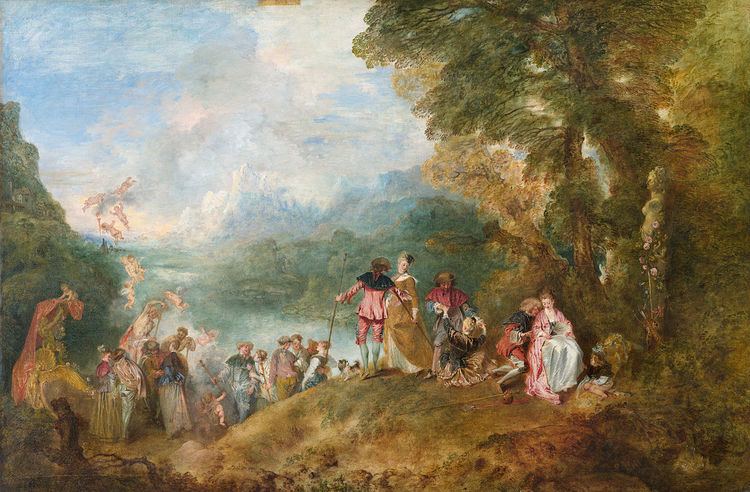 | ||
The Académie Royale de Peinture et de Sculpture (Royal Academy of Painting and Sculpture), Paris, was the premier art institution in France in the eighteenth century.
Contents
Founding
The Academy was founded in 1648, by King Louis XIV modelled on Italian examples, such as the Accademia di San Luca in Rome. Paris already had the Académie de Saint-Luc, which was a city artist guild like any other Guild of Saint Luke. The purpose of this academy was to professionalize the artists working for the French court and give them a stamp of approval that artists of the St. Luke's guild did not have.
According to the Encyclopédie of Diderot and d'Alembert, the academy was a result of "squabbles that arose between the Master Painters and Sculptors of Paris, and Painters protected by the King." In response to harassment from the other painters, a group of royal painters formed a plan for an academy, and obtained a ruling from the Conseil d'Etat for it to be established.
Directorship of Jean-Baptiste Colbert
In 1661, it came under the control of Jean-Baptiste Colbert, King Louis XIV's chief adviser, who, working through Charles Le Brun, ensured that the arts were devoted to the glorification of the King. A "royal style" was enforced which in practice meant a classical style.
Directorship of Charles Le Brun
From 1683 on, it reached its greatest power under the directorship of Charles Le Brun with its hierarchy of members and strict system of education. In 1749 the École des Élèves Protégés was set up as a separate school within the Académie, to give three years' specialist training to winners of the Prix de Rome so that they might make better use of their time in Rome - its alumni included Pierre Julien, Jean Guillaume Moitte and Jean-Joseph Foucou.
Suspension
On August 8, 1793, the Académie was suspended by the revolutionary National Convention, when the latter decreed the abolition of "toutes les académies et sociétés littéraires patentées ou dotées par la Nation".
Later history
It was later renamed Académie de peinture et de sculpture. The Académie is also responsible for the Académie de France in the villa Médicis in Rome (founded in 1666) which allows promising artists to study in Rome. In 1816, it was merged with the Académie de musique (Academy of Music, founded in 1669) and the Académie d'architecture (Academy of Architecture, founded in 1671), to form the Académie des beaux-arts, one of the five academies of the Institut de France.
